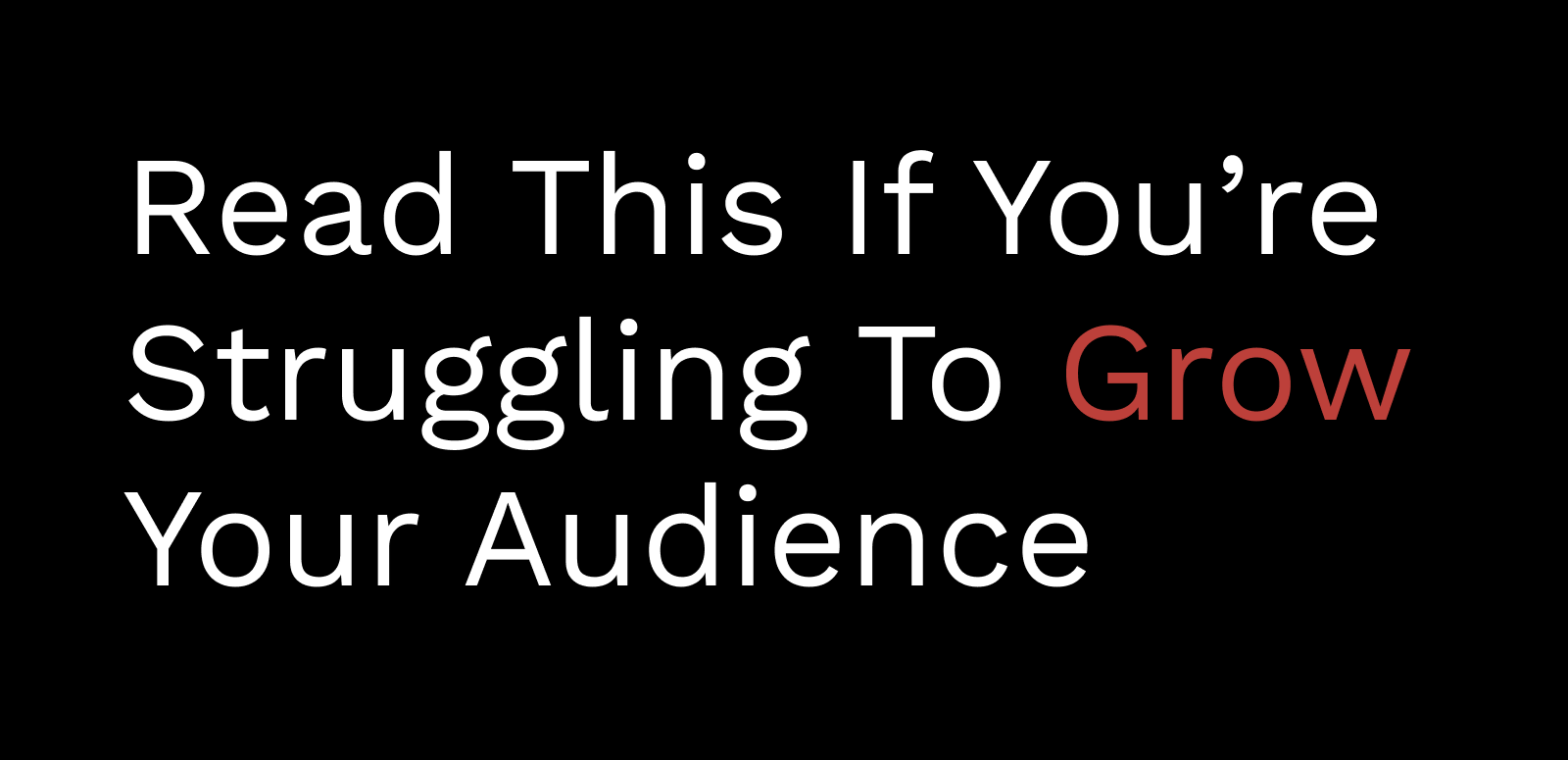If you’re struggling to grow your audience, it’s not because you suck.
(Probably.)
It’s more likely because you misunderstand how audiences work.
Following are five concepts to help you attract the audience you need.
1. Host a party, not a concert.
There are two different ways to approach your relationship with your audience, but most creators choose the wrong one.
They approach their audience like it’s a concert.
The creator’s on stage and the audience is a group of people they don’t know who watch them perform.
The creator seeks applause. The audience gives it (or not).
That can work, but it’s not a great approach.
Here’s a better one…
Instead of approaching your audience relationship like a concert, approach it like you’re hosting a party.
You know everyone there and they all know you. Anyone you don’t know was brought by someone you do know.
And you make an effort to get to know them.
This is a better approach because a truly valuable audience is a collection of relationships.
Make it a priority to know your audience on an individual level and let them get to know you.
Your primary goal should be to strengthen your relationship with your existing audience, not attract a bigger one.
Because whatever you want — sales, word of mouth, opportunities, sharing of your content, etc. — is most likely to come from the people closest to you.
Imagine if the time and resources you put into growing your audience was instead put into CONNECTING with them?
Two things would happen:
- You’d accomplish more of your goals.
- Your audience would grow faster.
Ironic, isn’t it?
Put another way: You’d have a lot more followers if you acted like you only needed 10.
Host a party, not a concert.
2. You are (or were) your audience.
When I shared five ways to identify your ideal audience, I said this:
Your ideal audience is often the person you used to be.
That’s because the easiest way to provide value to people is to share what you’ve learned from your own evolution.
Lots of people have problems you’ve already solved and they’ll appreciate you sharing the solution with them.
But your audience doesn’t have to be limited to people with problems you’ve previously conquered — you can also serve an audience with similar interests to your own.
There’s one thing you can’t do: Serve an audience in a niche you’re NOT interested in.
No matter how big the opportunity may seem, you’ll never connect with an audience around a topic you don’t know or care about.
And if you can’t connect with them, you won’t succeed with them.
For example, I may sense a massive opportunity to attract and monetize an audience of people interested in 401Ks, but that doesn’t mean I should pursue it.
I’m not the guy to do it because I don’t have any particular interest or expertise in the subject matter.
Don’t go after an audience simply because you see an opportunity to do so.
It won’t work.
3. Your audience and your ideal audience are not the same thing.
No matter how focused you are on a niche, your audience will always include people with different interests or at different stages of their journey.
Some segments of your audience will be a more perfect fit for your goals than others and this is your ideal audience.
Look for ways to identify and connect with them in a deeper way.
Here’s one way to do that:
Pick three traits your ideal audience has in common.
Then, create opportunities for people who match those traits to identify themselves and connect with them.
For example, my For The Interested newsletter readers include all sorts of creators.
But my ideal audience — the ones most likely to purchase my Newsletter Accelerator course or This Is How I Do It resources — are people who check all three of these boxes:
- They write a newsletter
- They use Twitter
- They have a product or service to sell
The people that match all of those criteria are my ideal audience.
To identify them I did something simple — I asked on Twitter who matches those characteristics and (literally) invited people to raise their hands.
Then I made a point to direct message and further establish my relationship with them, knowing they’re the most ideal fit for what I offer.
(By the way, several of them wound up buying my products and spreading the word about my work after we connected on a personal level.)
4. If you can’t reliably reach someone, they’re not actually in your audience.
The people who watched your video, but didn’t subscribe to your channel are not your audience.
The 85% of your social media followers who don’t see your posts because of the algorithm are not your audience.
The people who saw you perform in a venue and left with no direct connection to you are not your audience.
Your audience isn’t the number of people who consumed your previous creations— it’s the number of people you can reach with your NEXT creation.
This is a subtle but important distinction compared to how most people think about their audience.
Long story short?
Your audience is your email list because it’s the only algorithm-proof, direct connection to the people who want to hear from you.
5. Your audience isn’t YOUR audience.
You don’t own them or their attention.
They can leave whenever they want.
The way you keep them is by continuing to serve them.
Every piece of content you create, every post on social media, every interaction is an audition.
Break a leg.
Discover the secrets of successful creators.
